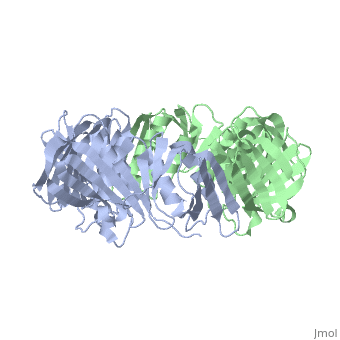Polymerase III homoenzyme beta subunit
From Proteopedia
(Difference between revisions)
(→Polymerase III Holoenzyme beta subunit) |
(→Polymerase III Holoenzyme beta subunit) |
||
| Line 1: | Line 1: | ||
== Polymerase III Holoenzyme beta subunit == | == Polymerase III Holoenzyme beta subunit == | ||
| - | <StructureSection load=' | + | <StructureSection load='2pol' size='350' side='right' caption='Structure of Polymerase III Holoenzyme beta subunit (PDB entry [[2pol]])' scene=''> |
The beta subunit of the Polymerase III holoenzyme is one of ten subunits in the Pol III multisubunit complex, which catalyzes the synthesis of both the leading and lagging strands of DNA in E. Coli. While the core Pol III enzyme (consisting of the alpha, sigma and theta subunits) dissociates from the DNA after replicating approximately 12 residues, the holoenzyme complex has a processivity of more than 5,000 residues. The increase in replication processing is due to the beta subunit. | The beta subunit of the Polymerase III holoenzyme is one of ten subunits in the Pol III multisubunit complex, which catalyzes the synthesis of both the leading and lagging strands of DNA in E. Coli. While the core Pol III enzyme (consisting of the alpha, sigma and theta subunits) dissociates from the DNA after replicating approximately 12 residues, the holoenzyme complex has a processivity of more than 5,000 residues. The increase in replication processing is due to the beta subunit. | ||
Revision as of 09:29, 8 November 2012
Polymerase III Holoenzyme beta subunit
| |||||||||||

